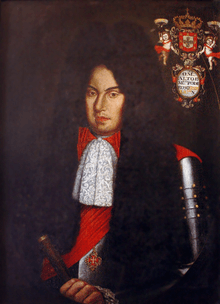House of the Infantado

The House of the Infantado (Portuguese: Casa do Infantado) as a seigniory for the second eldest son of the Portuguese monarch.
History
Created in 1654 by King John IV of Portugal, the properties and riches confiscated from the Marquis of Vila Real, supporters of House of Habsburg, during the Portuguese Restoration War. The House of the Infantado belonged to and was passed on to the second-born son of each King — i.e., the Infante that was not entitled to the crown — as his appanage. This member of the Portuguese Royal family was known as the Lord of the House of Infantado (Senhor da Casa do Infantado) or simply the Lord of Infantado (Senhor do Infantado).
Heritage
The following estates were part of the Casa do Infantado:
- Corte-Real Palace
- Queluz Estate
- Santa Maria da Feira Castle
- Bemposta Palace
Lords of Infantado
The following Infantes of Portugal were Lords of Infantado:
- Infante Pedro - Second surviving son of King João IV, he became regent as the result of a coup d'état sparked by the mental disability of his older brother, Afonso VI and became Pedro II of Portugal after Afonso's death without issue.
- Infante Francisco - Second surviving son of King Pedro II, he was a proposed candidate to marry Archduchess Maria Magdalena of Austria.
- Infante Pedro - Second surviving son of King João V, he became Pedro III of Portugal after marrying Maria I of Portugal.
- Infante João - Second surviving son of Queen Maria I, he became João VI of Portugal after the death of his older brother, José, Prince of Brazil.
- Infante Miguel - Second surviving son of King João VI, he became Miguel I of Portugal after usurping the throne from niece Maria II of Portugal.
External links
| |||||||||||||||||||||
.svg.png)